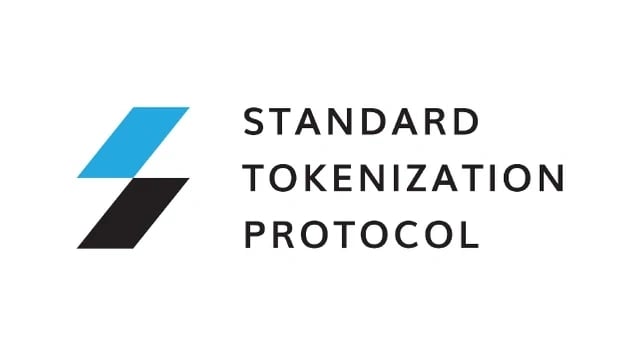Subscribe to wiki
Share wiki
Bookmark
STP Network
The Agent Tokenization Platform (ATP):Build autonomous agents with the Agent Development Kit (ADK)
STP Network
STP Network (STPT) was a decentralized platform for digital asset issuance, powered by the STP token, which facilitated token offerings in a regulatory-compliant manner across numerous jurisdictions worldwide. [1]
Overview
The Standard Tokenization Protocol (STP) Network provided no-code tools and infrastructure to simplify the creation and management of DAOs across multiple blockchains, including Ethereum, Polygon, BNB Chain, and Klaytn. Initially launched as Verse Network on an EVM-compatible platform in 2021, STP aimed to improve decentralized decision-making, cross-chain interoperability, scalability, and operational efficiency. In 2022, it introduced the BNB Chain Application Sidechain (BAS), which offered high throughput and low transaction fees to support more scalable and secure DAO operations.
STP also expanded beyond traditional DAO use cases by developing Autonomous Worlds (AWs), real-time, on-chain environments for persistent user interaction in gaming and metaverse contexts. As of that time, STP supported over 440 DAOs spanning decentralized governance, gaming, esports, and AI communities. The native token, STPT, served as a utility asset to reduce fragmentation in DAO ecosystems and enable no-code DAO creation and management through the Clique platform. This tool provided a central dashboard for overseeing multiple DAOs and integrated compliance features. STPT was also used to issue permissioned ERC-20 tokens that enforced issuer-specific and regulatory rules on-chain, enabling compliant asset tokenization and cross-border ownership transfers. [7] [8]
Rebranding
In May 2025, the STP Network rebranded to AWE Network following a community-approved proposal, marking a strategic shift from coordination infrastructure toward Autonomous Worlds. The rebrand includes a 1:1 token swap from $STPT to $AWE with no change in total supply, along with updates to the website, visual identity, social media, and all ecosystem references.
AWE Network focuses on enabling scalable, AI-driven autonomous worlds where thousands of agents collaborate using advanced technologies like parallel processing and GPU optimization. This transition reflects STP’s evolution since its 2019 launch—from DAO tooling and identity systems to AI agents and multi-agent environments—with developments such as AWNS, a decentralized identity protocol, and infrastructure for AI agents capable of learning and interacting. The rebranding aligns the project’s identity with its new direction and ecosystem goals. [9] [10]
Features
STPT Standard

STP Network’s STP-Standard was an open-source standard that defined how ownership of tokenized assets was generated, issued, sent, and received while complying with necessary regulations. Everything built on top of the STP-Standard used the protocol’s on-chain Compliance Validator to verify compliance with relevant laws (such as KYC, AML, accreditation, etc.) as well as any issuer-specific requirements (including ownership concentration, holding periods, and voting). The Validator Committee served an advisory function to ensure the Compliance Validator enforced the most up-to-date legislation. STP Network allowed assets to move freely across jurisdictions and platforms in a fully compliant manner. [4]
STP 2.0
STP 2.0 was a synthetic tokenization protocol developed on Polkadot that enabled the creation and trading of synthetic assets (ST-Assets) representing tokens from multiple blockchain networks. It supported cross-chain value transfer and allowed users to build multi-chain indices tracking groups of assets across various token standards. The platform initially issued these indices, intending to enable users to customize them later. Polkadot’s infrastructure was designed to support interoperability and enhance transaction efficiency compared to Ethereum. [4]
STPT Integration
STP integrated its stablecoin, USTP, with Curve Finance to launch a USTP/USDT metapool. This metapool enabled trading between USTP and a base pool of other stablecoins, including USDT, USDC, and DAI, providing deeper liquidity for USTP within the STP ecosystem. Liquidity providers could contribute one or more of these stablecoins to the pool, thereby gaining exposure across the group. This move was part of STP's broader effort to expand its presence within decentralized finance by partnering with established DeFi protocols. [5]
USTP
USTP was a stablecoin used within the STP Ecosystem and STP DAO, functioning as part of a decentralized governance structure where STPT holders influenced key protocol decisions, including those related to USTP and its associated DeFi platforms. It enabled users to pursue yield opportunities, apply DeFi strategies, and transact across various platforms both within and beyond the ecosystem, such as Blockzone and ChickenSwap. USTP was over-collateralized by STPT to mitigate the risks of liquidation during market volatility. [5]
STP Token

STP Network's platform token, STPT, was designed to align network participants and support core protocol functions. It was required for multiple use cases, including paying issuance fees for creating STP-Standard tokens that represented fractional legal ownership and adhered to compliance requirements via the Compliance Validator. STPT was also used as gas to execute compliance verification during transactions, and enabled a proof-of-stake system where holders could earn rewards by staking tokens to validate regulatory compliance. Governance was managed through a validator committee elected by token holders, with validators earning STPT for maintaining proper function and legal alignment of the Compliance Validator.
AWE Token
In May 2025, STPT was replaced by $AWE at a 1:1 ratio, which operates on Base and supports core functions in the AWE Network, including governance, simulation costs, agent tipping, inference, and interaction with AI-based environments through World.Fun. [6] [9]
Partnerships
See something wrong?
The Agent Tokenization Platform (ATP):Build autonomous agents with the Agent Development Kit (ADK)
